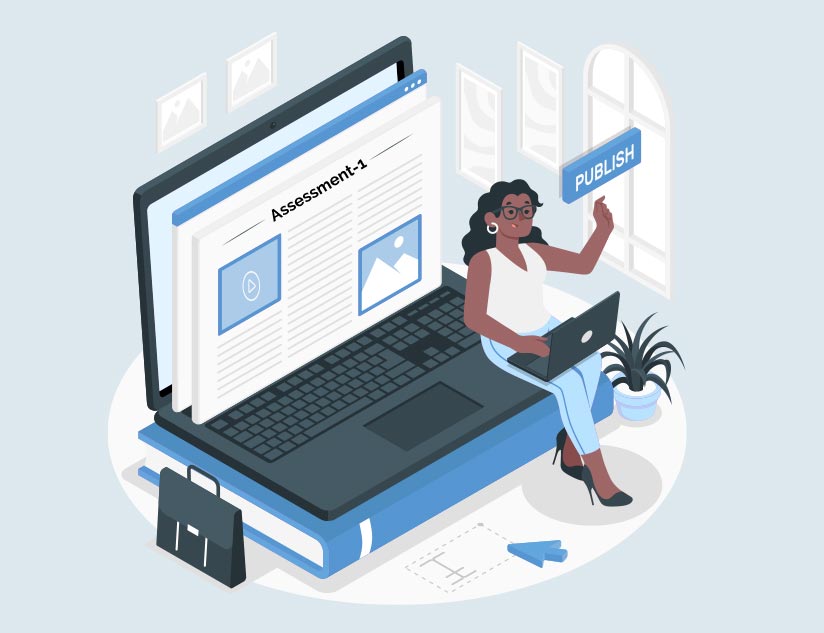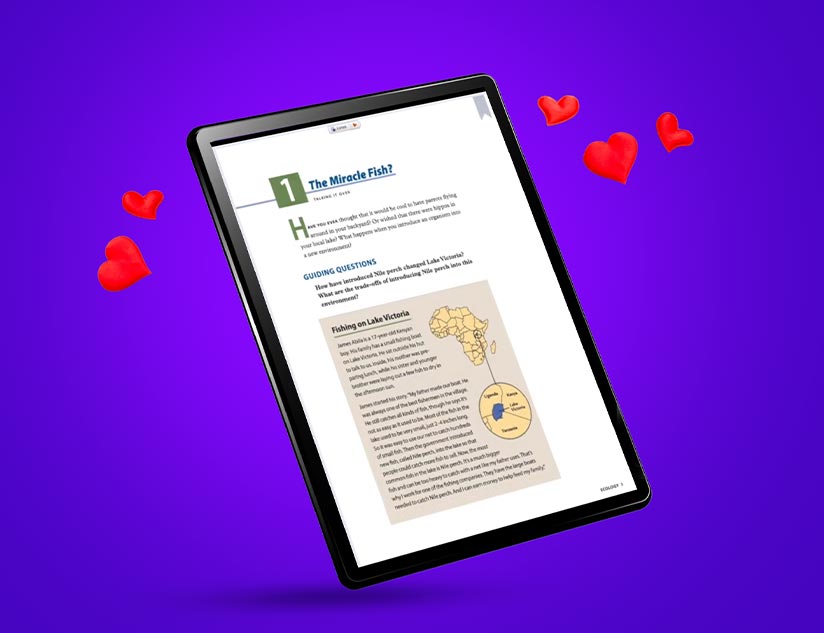The medium of book consumption was slowly shifting from physical books to digital devices before the pandemic. The school closures and lockdowns sped up this transition, so much so that the market size of the global book publishing industry witnessed an annual decline of 1.1%, on average, between 2016 and 2021. On the other hand, it is estimated that the global digital publishing market will grow from $51.06 billion in 2020 to $56.09 billion in 2021 at a CAGR of 9.9%.
Publishers need to address this shift as quickly as possible to stay ahead of the curve. Moreover, if you analyze the two publishing methods, you will find that working with a digital publishing platform offers more benefits than working with traditional print publishing.
Why Shift to Digital Publishing?
If you are in the publishing industry, you would know that you cannot keep your business alive by continuing only with print publishing. Digital publishing is becoming increasingly popular across generations of readers and there are several reasons behind this.
1. Cost-Effectiveness
Buying a printed book requires you to pay for the cost of transportation, printing, publishing, distribution, cover creation, and other sundry charges as well. However, when you choose an eBook, it eliminates a lot of these costs. You have to pay only for the author’s hard work and some profit that they deserve.
2. Time Efficiency
A typical design process for a textbook may take up to 17 months. Your work usually has to go through layers of production – agent, editors, and publishers – when you are publishing a book. With a digital publishing platform, you can get your work to the readers without wasting any time. You even get to constantly update or edit your content to better please your readers.
3. Access to Distribution Analytics and User Behavior
With digital publishing, you can track your distribution patterns in real-time and access analytics on your eBook’s performance. It allows you to plan your eBook sales strategies and revise them, if needed.
4. Wider Reach
Online content knows no boundaries and you can conveniently reach a global audience if you opt for digital publishing. It allows publishing companies and educational content owners to reach out to users across borders and potentially increase their earnings.
5. Better Income Source
It is extremely simple to share eBooks. So, your readers can easily recommend your work to their peers that will fetch you more income without incurring marketing costs.
6. Stay Eco-friendly
It is estimated that approximately 30 million trees are used to make books that are sold in the United States each year. By going digital, you can actually help the environment by saving paper. If you choose to publish digital textbooks, you can save around 9 thousand pages of wasted material that an average classroom accounts for.
7. Save on Storage Space
You can carry thousands of books on a digital device wherever you go, without taking up half the space required for a single physical book. It is quite easy to store and manage eBooks. Consider the savings on storage space, which means cost savings and the space can be used for other business activities.
8. COVID-19 Emergency
This pandemic has accelerated the need for analog-to-digital transformation. With September 2020 eBook sales up 22% year over year and 16% year-to-date, publishers are recognizing the benefits of digital learning offerings and the importance of investing in EdTech innovations.
Things to Consider Before Shifting to Digital
You may already be intrigued by the various benefits of digital publishing. However, if you want to publish an eBook for K-12 students, you should know that merely transferring the content from paper to digital format will not produce the best results. You need to consider certain factors that should be included in eBooks to make them more engaging and relevant for the students. Here is a checklist that can help you create such an eBook:
1. Select the Right Layout
Layout plays a big role in determining the visual appeal of a book. Your users will access your content on various types of devices, such as laptops, smartphones and tablets. With a powerful content conversion platform, you can ensure reflowable content that fits perfectly into different screen sizes. In addition, it will allow you to integrate interactive and multimedia content to ensure maximum engagement.
2. Ensure Simple Formatting & Ease of Navigation
Remember that eBooks are convenient so they can be easily carried around and read anywhere. Similarly, their functions must also be convenient and easy to use. Make sure that the pages are non-cluttered and neat with an easy-to-locate menu. A simple color palette with a non-fussy design is more appealing to the eyes. The pages should also have a quick load time so that readers don’t get frustrated when their internet speed is slow. With a powerful online/offline eReader, you can offer personalized reading experiences with features like note taking, highlights, bookmarking and offline access to content.
3. Choose The Right Cover Page Thumbnail
A visually attractive cover page will make your eBook stand out from your competitors. Make sure that it is relevant to the course subject and the thumbnail image has graphics and texts that are clearly readable. Here too, a robust content authoring tool will give you access to thousands of templates and themes, saving you time and effort in creating content.
4. Include Interactive Elements (Even Assessments)
As a digital publisher, you can add multiple pages to better explain a concept and use external hyperlinks. However, it’s the interactive features that keep your readers intrigued and engaged. You can include multimedia elements, such as an audio file that allows students to listen to the course content while multitasking or videos to keep them more engaged. Additionally, you can include online assessments (with quizzes, MCQs, etc.) to enable students to test their knowledge before proceeding to the next topic. Online assessments can help them with instant feedback too.
5. Affordable Pricing
Choosing the right price is the most difficult part. A report by the US Bureau of Labor Statistics revealed that textbook costs for college education had gone up by 88% between 2006 and 2016. These rising costs are a big reason why students started moving towards eBooks in the first place. With a powerful digital publishing platform, you get access to robust features that saves publishers from investing huge in-house resources. So, select a competitive price and help the readers, especially students from low-income households.
MagicBox™ and its advisory team can provide you a platform to create high-quality learning content that is at par with the latest industry standards. Contact us to know how we can help with customizing our award-winning platform to your needs.















